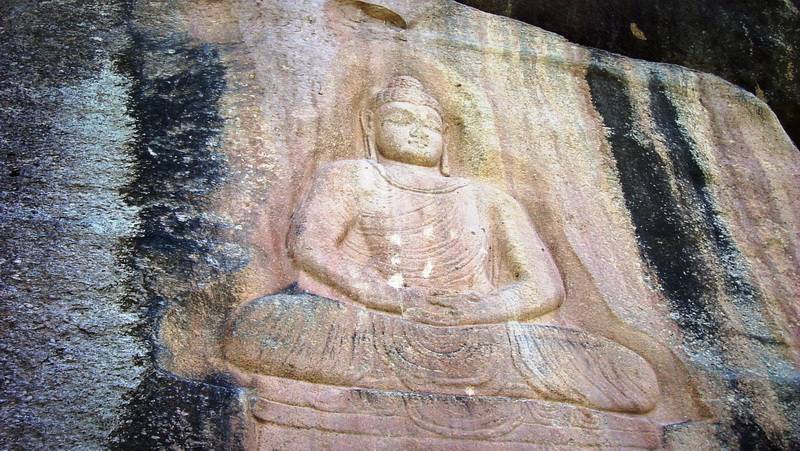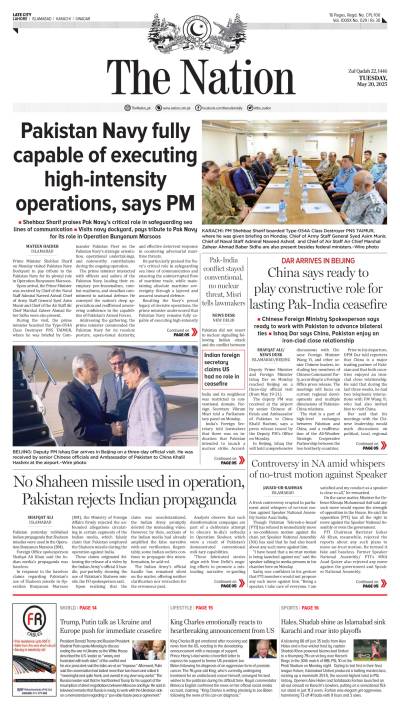A few kilometers into Swat, from the main entrance point of Landakay, one can find a human size smiling Buddha statue carved into the hard stone in the mountain. The scene is picturesque. A mountain with Buddha’s statue, and long fields of cultivated rice running in front to the Swat River…
The big statue is a series of twenty or so stairs, which lead into a cave twenty feet above in the mountain. The cave contains a small statue of Buddha and different paintings carved into its walls. A mesmerizing fact about the duo is that they had another such pair perfectly in parallel to them on the other side of the river so that the sun stands in between them at midday. Unfortunately there are only remains of the statues on the other side of the river.
Swat came under Muslim rule in the age of Mahmud Ghaznavi. Yousafzai, the current inhabitants of the area, entered the area in times of Babur, the Mughal emperor of India. Swat has very few Hindu families in main urban centers like Barikot, Mingora and Khwazakhela. Yet, the statues have blessed the valley in all its glory for millennia, and no practicing devout Muslim of the area ever thought of desecrating them and doing away with civilizational and cultural heritage.
After 900 years of Muslim rule and two millennia, a terrorist and extremist movement led by Fazlullah rose and fixed bombs to the torso of the smiling Buddha. People of Swat, in an unconscious way, are proud of their millennia old heritage. They recount tales associated with each of the sites to any traveler they come across. That bomb not only blew up parts of the smiling Buddha, but also destroyed some of the pride of the area’s inhabitants.
Another such example, but more commonly known and globally focused, is blowing-up of Buddhas of Bamiyan in the outskirts of Kabul. They were glorious and majestically overlooked the vast landscape of the valley. But despite the global powers’ pleading, and in spite of the fact that all previous rulers of the region had let them be, the Taliban decided to turn them into rubble.
What do these two acts have in common? Pre-Muslim heritage of the region has played a part in forming the identity of the people. Subsequently a minority rose, quoting a few historical precedents and rarely known religious injunctions, to deal a heavy blow to the collective source of unconscious pride. The stultifying question which, now more so than ever, should take the center-stage is: What has this got to do with Islam?
Some hues of the liberal circles will insist on making one believe that it has everything to do with primitive nature and medievalism of Islam. Others will abdicate Islam of any role and will attribute it to the tribal and ignorant ways of people of the area. Then there are some who will deny altogether and will label it a Jewish-Hindu-Christian-Communist conspiracy to malign Islam and present Muslims as terrorists. Ignoring the latter opinion will ensure stable blood pressure and a sane mind.
If these acts are preeminent teachings of Islam, then why did the Muslims let the statues stand for centuries, allowing them to be a source of collective pride? Were they bad Muslims and the gun-throttling long-haired man true apostles of Islam? If it has nothing to do with Islam, then why can one trace justification in the corpus of theological thinking of Islam? Why do the majority of the Ulema (in case of Bamiyan) support the decision to demolish the statues with their fatwas? Again blaming the tribal nature of Pushtuns – as the ilk of respected Ghamdi are prone to do – is utter dehumanizing of the people and betrays complete ignorance of the culture and history of the people. And so the question arises: does it have anything to do with political machinations of global powers to find proxies to fight its dirty wars?
A little soul-searching, combined with unbiased reading of history of thought in Islam, can result in many enlightening discoveries. We have all heard of the stress between rationalistic and fundamentalist and regressive strains of Islamic thinking, dating back to Ibn-Timiyya and to luminaries such as Ibn-Rushd and Wasil ibn-Atta. With the weakening of Muslim political power centers, began the downfall of rationalistic thinking in Islam and also the persecution of the moderate and progressive thinkers by the more conservative and fundamentalist clergy which had ascended to power. The Ulema were kept in check by the secular power of the state but from the 13th century onwards, the clergy and fundamentalist assumed un-hindered role of deciding religious matters and guarding of religious thought. Fast forward to the tryst of Muslim world with western colonialism.
The fundamentalist, when confronted with the impending loss of their authority, couched their insecurities in the paranoia of losing unique Muslim identity. Paranoia always results in shutting down any form of dissent and feigns upon any progressive thought as an instrument of ‘the Other’. This resulted in further shrinking the already narrow space of debate and rationality in the folds of Islamic religious thought. Precepts which were present in murky details within the corpus were dug out and precedents that had been all but forgotten were presented as the crown-jewels of doctrines of faith.
This revert-back to the so-called fundamentals of the religion, sought to trump all unique and diverse ethnic, cultural, nationalistic identities and conflate all of them into one Pan-Islamic identity. Such a grand project always requires simplification, a binary of Us vs. Them. Logically the differences within Us, which were the result of unique civilizations and merging of diverse cultures, were as much of a foe as the alien ways of the Other. The dialectic of the true and right Islam required alienation of all that challenged the simplified, concrete, formalistic, methodical and strictly narrow-defined precepts of the dogma. And there it comes: the doctrine and the institution of takfirism. The fundamentalist Islam as is presented today, in one way or the other, traces back to the roots and vagaries of takfirism.
Islamic extremism in its current form, without a question, has something to do with political maneuvers of global powers of the 20th century. Colonialism, neo-colonialism, cold war, proxy wars, labelling fundamentalists as chosen epistles of God on earth, receptions of Haqqani’s at 11th Downing Street, using takfirism as instrument of state’s foreign and internal policies, and role of religion in forming national identities and presenting it as the essence of existence – has the same to do with extremist manifestation of Islam of today as that it has to do with fundamentalism. But the doctrinal and ideological reasons are driving forces with the political maneuvers complementing it, rather than the other way around. The need here is to counteract the doctrines of fundamentalism. The good thing is there are multiple devices and institutions in Islamic theological thinking that can be used and are used to fight the menace and anomaly of Islamic extremism.
Islam presents a pluralistic thought. No one opinion in Islamic theology is inherently better because of sanction of a religious authority and the doors of ‘Ijtihad’, the exertion of reason on deciding religious matters when the original sources of Quran and Hadith are silent on it, are open to all with requisite qualification. The revival of reason and thoughts of rationalists which were called Mutazalites, contains sufficient body of doctrines and reasons to present an alternative interpretation to the precepts and precedents which are used by Islamic extremists.
Mutazalites were humanists. Reason, for them, was supreme. The western thought in many ways owes its existence to work of Mutazilites. The Islamic world of today takes pride in works of Al-Farabi, Ibn-Sina and Ibn-Rushd, but they and many other ‘Muslim scientists’ were proud Mutazilites. Serious consideration of their thinking and combining it with institution of Ijtehad and many other devices of different schools of Islamic jurisprudence can result in multi-faceted Muslim identities. And thence the smiling Buddhas of Swat and Bamiyan can smile in harmony finding their place in diverse historical identities of the followers of Islam.






